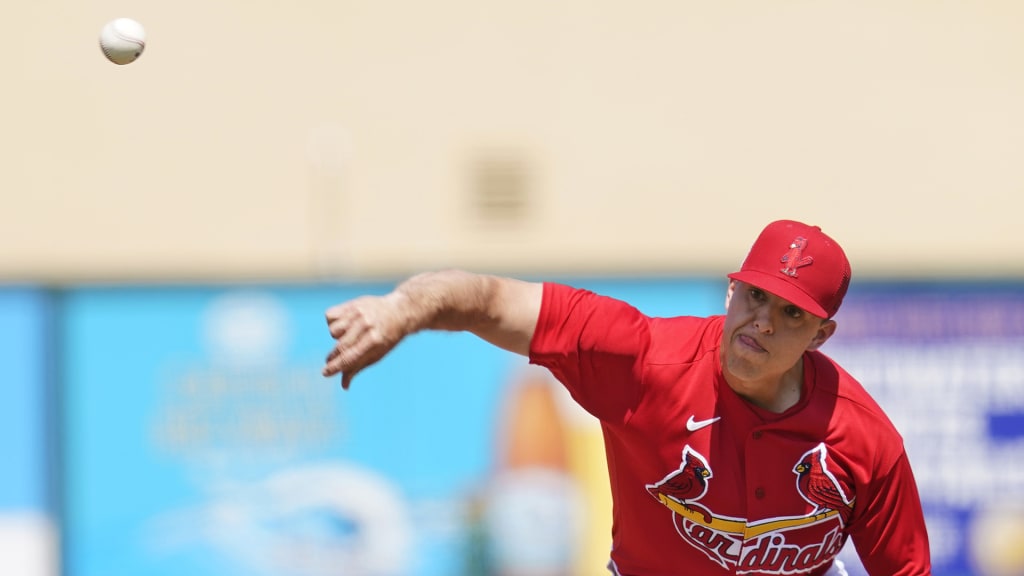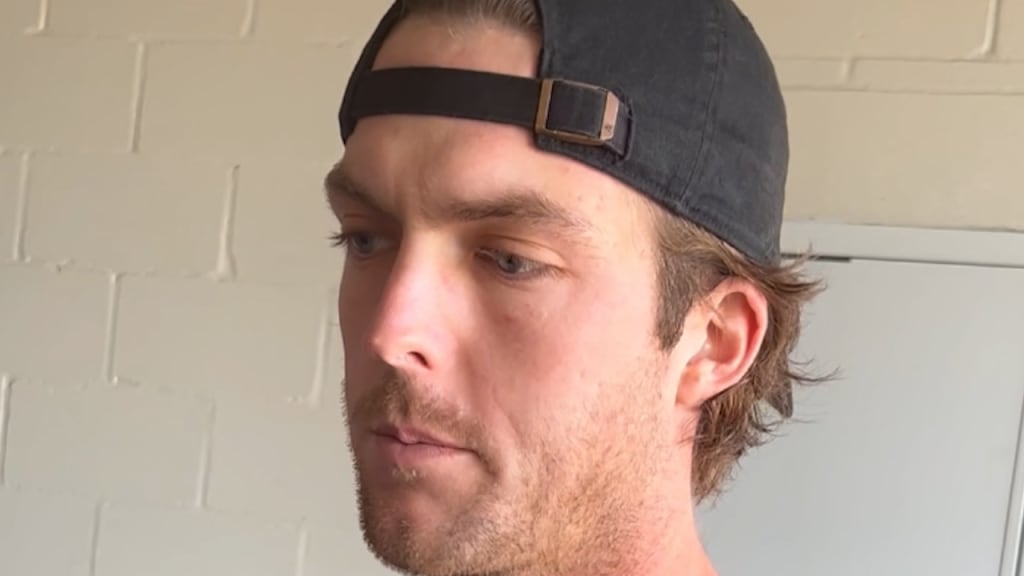Cardinals plan to get creative with deep bullpen

PORT ST. LUCIE, Fla. -- Taking stock of the backgrounds, live arms and firepower of the relief pitchers surrounding him during a recent drill, Cardinals righthander Ryan Helsley came to a strong conclusion about the future of a bullpen that could be as deep and diverse as it has been in years.
“We all really believe in ourselves and we’re kind of a dark horse to be one of the better bullpens in baseball, in my opinion,” said Helsley, who made his Spring Training debut Friday with a scoreless inning. “We have guys who have experience closing games in [Giovanny Gallegos], [Alex Reyes], [Jordan] Hicks, and [Génesis Cabrera] and myself have closed a few of them out, too. So, we’ve all been at the back end of bullpens and there’s a lot of faith going into the season with the five or six of us ready.”
It’s a good thing the Cardinals have a depth of pitchers who have closed games because new manager Oliver Marmol, pitching coach Mike Maddux and the front office are tinkering with the idea of having a fluid bullpen free of defined roles. Whereas many pitchers strictly adhere to their routines and managers often prefer having a defined pecking order when it comes to bullpen hierarchy, the Cardinals are contemplating a system where pitchers are called upon because of favorable matchups and their top pitches instead of set schedules. Whereas some might consider it bullpen by committee, the Cardinals think of it as bullpen by calculus, cunning and control.
“When you look at the structure of your bullpen, being able to have different styles of righties and lefties is perfect, actually,” said Marmol, whose Cardinals lost 7-3 to the Mets on Sunday when Dakota Hudson (four earned runs) and Jake Woodford (one earned run, five hits) labored. “You’re not just matching righties and lefties, but by what style of hitter catches up to stuff at the top of the zone and which one struggles at the bottom. Then, you can match them up. It’s not just 'handed-ness,’ as it is arsenal.”
This browser does not support the video element.
That strategy went into how team president John Mozeliak and GM Michael Girsch structured the makeup of the Cardinals’ bullpen, and it will figure greatly into how Marmol uses its components. Once the lockout ended and free agency opened, the Cardinals placed a value on flexibility and experience while signing Aaron Brooks, Drew VerHagen, Nick Wittgren and Blake Parker. Brooks and VerHagen can start or relieve, while Wittgren and Parker pitched together previously out of Cleveland’s bullpen.
The Cardinals believe the strength of their bullpen, ultimately, will be the ability to throw a variety of arms at hitters. Whereas Cabrera relies on electric stuff and a fastball that averaged out to 97.6 mph last season, fellow left-hander T.J. McFarland depends more on a sinker and guile.
From the right side, Hicks and Helsley are known for possessing fastballs that approach triple digits, while Wittgren is at his best sinking the ball against righties. Gallegos, who relies heavily on a slider and a fastball that averaged 94.4 mph last season, saved the Cardinals down the stretch when he moved into a modified closer role. After 2021 All-Star Alex Reyes (10 wins, 29 saves) struggled and succumbed to shoulder fatigue, Gallegos backed up his 24 early-season holds with 14 saves.
This browser does not support the video element.
Reyes, still regarded as possessing one of the Cardinals’ best arms despite his injury history, is hoping to be back by late May after needing a stem-cell injection to calm down labrum fraying. He is confident good health can lead to him being dominant again -- either as a closer or starter.
“My goal is to get healthy and be ready to pitch, wherever it is, and help my team win a championship,” Reyes said.
Hicks, who has been out much of the past 2 1/2 seasons following Tommy John surgery, a COVID opt-out and a minor re-injury, could be the key to the Cardinals bullpen because of his dynamic arm talent. The 25-year-old righty, who had a combined 20 saves from 2018-19, tied Aroldis Chapman in 2018 for the fastest pitch in baseball history (105.1 mph) and he also had the fastest pitch of 2019 (104.2 mph). Now, after enduring two elbow injuries, Hicks is hoping less arm torque -- and fastballs topping out at 98-99 mph -- can help his durability.
This browser does not support the video element.
“It’s just my competitiveness and all-out nature that might have [injured my elbow]. Also, throwing a little harder than average,” said Hicks, who will make his spring debut on Monday against the Astros. “I think [dialing it back] could help with long-term health where I’m not all out [throwing] all the time.”
Marmol said the effectiveness of his bullpen will determine whether the franchise takes 14 or 15 pitchers to Opening Day to take advantage of rosters reportedly being expanded to 28 in April. More arms give the bullpen more diversity, and they give Marmol more options late in games.
“I want to leave spring with, ‘Here’s how we finish games,’” he said. “For me, that’s not just the ninth. I want to close out the seventh, eighth and ninth, and we’ve got guys that can do it. I don’t want to commit to, ‘This is our ninth inning guy,’ every time.”
